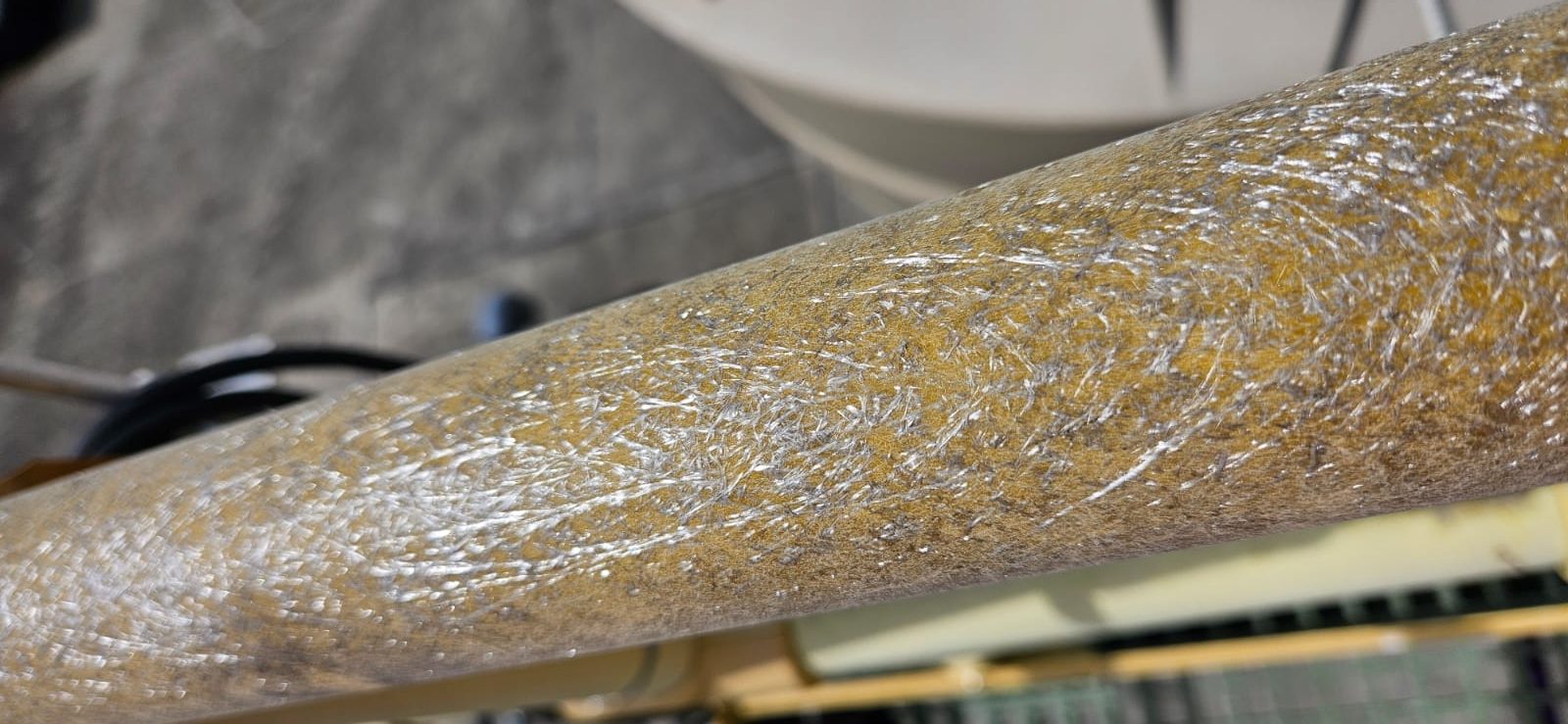Short answer: FRP (fibreglass-reinforced polymer) handrails can look appealing on paper — lightweight, corrosion-resistant, and non-conductive — but in Australia’s harsh outdoors, and particularly in water and transport environments, they often underperform.
The polymer resin binding the fibres is vulnerable to UV degradation, heat, and fire, driving frequent recoating and premature failure. By contrast, metals such as hot dip galvanised (HDG) steel, aluminium, and 316 stainless steels provide predictable long-term durability, compliance assurance, and simpler maintenance cycles.
Why FRP Struggles in Outdoor and Industrial Environments
FRP handrails are made from glass fibres bound in a polymer resin (typically vinyl ester or epoxy). The resin matrix protects the fibres and distributes load, but it’s also the system’s weakest link.
In high-UV, coastal, or industrial conditions, photo-oxidation breaks down the polymer chains, causing chalking, brittleness, and fibre bloom. Without frequent topcoat renewal, FRP systems lose both appearance and strength within 10–15 years.
Specific Risks for Water and Rail Applications
Water and wastewater facilities
Continuous exposure of FRP to moisture, chlorides, cleaning agents, and microbial growth can cause resin breakdown, leading to surface chalking, delamination, and reduced structural integrity. High UV exposure and fluctuating humidity levels and chemical exposure accelerate this deterioration, resulting in increased maintenance, recoating cycles, and eventual replacement.

By comparison, HDG, aluminium and stainless-steel systems are proven performers in these settings.
- HDG coatings typically deliver 40–100+ years to first maintenance in C3 environments (AS/NZS 2312.2).
- 316 stainless and duplex grades maintain strength, corrosion resistance, and visual appeal even in chlorinated and saline conditions, with minimal upkeep.
Rail and transport infrastructure
Rail and transport corridors expose materials to mechanical vibration, UV, dust, ballast impact, and heat. As mentioned above, over time, FRP material can crack, splinter, or lose stiffness, especially around joints or fasteners, under repeated loading and impact. And because FRP cannot be easily repaired onsite, they must be fully replaced, creating safety and scheduling challenges for high-traffic transport corridors.
In safety-critical applications such as station platforms, overpasses, or access walkways, metals provide far more predictable load resistance, impact resilience, and lifecycle cost.
Compliance and Whole-of-Life Considerations
Under AS 1657:2018 and the National Construction Code (NCC), handrails and guardrails must meet stringent load, geometry, and deflection criteria. Metals are covered by established durability standards and design tables, making compliance straightforward and verifiable. FRP, however, can only comply when tested as a complete system — and even then, resin degradation over time can invalidate the original design assumptions.
For safety-critical applications where uptime, durability, and public safety are non-negotiable, metal barrier systems are the safer, more economical long-term choice.
